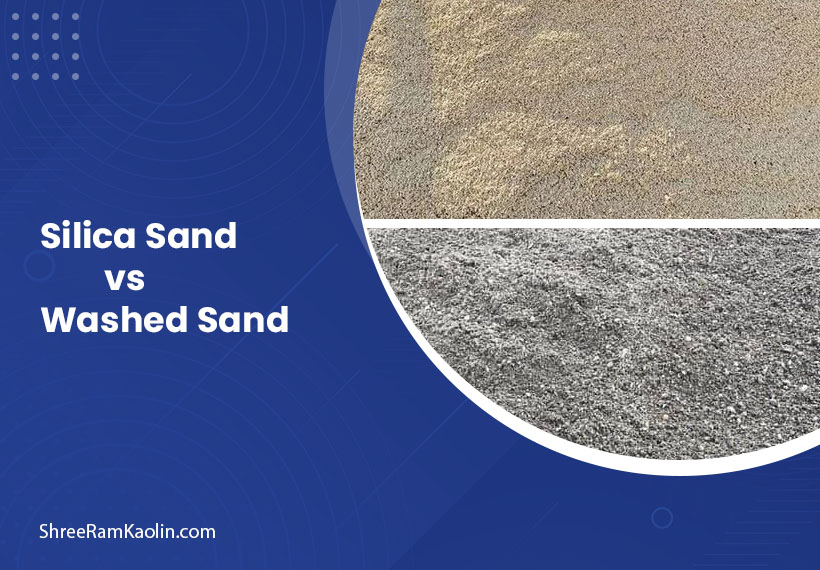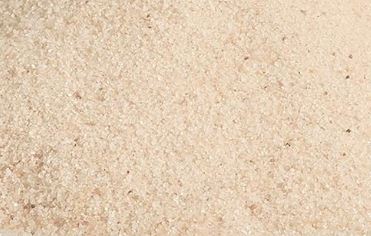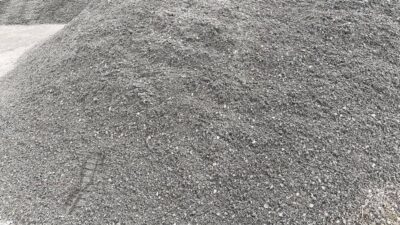Understanding the Difference Between Silica Sand and Washed Sand

In construction, landscaping, and industrial works, sand is no longer just a filler but it has a direct correlation with quality, performance, and durability. Two of the most popular kinds of sand are silica sand and washed sand. Even though they may seem identical to an untrained eye, the things that set them apart are major and can be the deciding factor for their compatibility with particular jobs.
We will discuss the peculiar characteristics, applications, and advantages of the two types of sand: silica sand and washed sand in this post, thus, you will be able to decide wisely in your coming project.
What Is Silica Sand?

Silica sand is the same as industrial sand or quartz sand and it is made up of mainly silicon dioxide (SiO₂). It is naturally formed by the weathering of quartz-rich rocks such as granite and sandstone. This process takes thousands of years. The resulting sand is of very high
purity and has extremely fine grain size and sharp edges.
Key Characteristics of Silica Sand:
- High silica content (usually over 95%)
- Granular and angular particles
- White or light beige
- Chemically inert and heat-resistant
The properties mentioned above make silica sand the best choice in such cases where purity and stability are important.
What Is Washed Sand?

Washed sand, being the name is a good indicator, is a product of the process of cleaning where dust, clay, silt, salt, and other impurities are removed. Washed sand does not mean the same thing as silica sand and it is not about the mineral composition of the sand, but it is about the cleanliness of the particles and their refinement.
Key Characteristics of Washed Sand
- Free from debris and contaminants
- Clean, rounded grains
- Neutral colour (beige, brown, or off-white)
- Better drainage properties
Washed sand had been conceived as more versatile and it was often used in general-purpose applications.
Core Differences Between Silica Sand and Washed Sand
It is important to know the differences between silica and washed sand in order to make a proper decision. Some basic differences are listed below for your consideration:
| Feature | Silica Sand | Washed Sand |
| Composition | High-purity quartz (silicon dioxide) | Varies, not necessarily quartz-based |
| Purity Level | Typically 95% or more silica | Mixed content, lower purity |
| Grain Shape | Angular and coarse | Rounded and smooth |
| Processing | Mined and refined for industrial use | Washed to remove contaminants |
| Color | White or light tan | Light brown, beige, or off-white |
| Common Uses | Glassmaking, casting, filtration | Mortar, rendering, backfilling |
Applications of Silica Sand
Silica sand is chemically and physically consistent and is thus very useful in a number of highly specialized industries.
1. Glass Manufacturing
Silica sand is the most important raw material in the glass industry due to the fact that it is composed of a high percentage of silica and it is very clear.
2. Foundry Casting
When metals are cast, silica sand is the substance that makes moulds that can help the heat extremities to not cause any problems.
3. Filtration Systems
Because of its property of not releasing chemicals and the retention of particles, the silica sand is the main ingredient in the water filtering process.
4. Construction and Sports Turf
As a part of the mix of concrete, it is also used in buildings, and as a part of the mix of sports fields or golf courses, it is responsible for perfect drainage as well as stability.
Applications of Washed Sand
Washed sand, due to its cleanliness and adaptability, is a widely used material in construction and landscaping.
1. Concrete and Mortar
Washed sand is the best choice for making concrete and mortar mixes for the construction of residential and commercial buildings.
2. Rendering and Plastering
Washed sand as being smooth in nature is highly recommended for wall coatings and plaster work.
3. Backfilling and Pipe Bedding
Being clean and able to compact the nature of sand makes sure that the soil is still firm around the underground utilities.
4. Playgrounds and Landscaping
That’s right, it is safe and non-toxic which makes it perfect for play spaces for kids whether indoors or outdoors, or garden landscaping because of its naturally safe characteristics.
Which Sand Should You Use?
The right choice depends on the specific requirements of your project:
- Choose silica sand: If your applications – from glass production to metal casting to water filtration – require a clean, sharp, abrasive that holds up to high temperatures and isn’t impacted by chemical reactions, the solution is obvious— silica sand .
- Go with Washed sand: In case your project is about a clean and soft material that can be applied both in construction and landscaping, such as plastering, pipe bedding, or paving, washed sand will be the best choice.
Environmental and Safety Considerations
Both silica sand and washed sand are natural elements, however, they have different safety characteristics:
- Silica Sand: Prolonged exposure to fine dust of silica (respirable crystalline silica) may lead to health problems such as silicosis. It is important that safety measures are followed and protective equipment is used while working.
- Washed Sand: This is a safer option, which can be used every day without any risk, especially if used in a place like a playground or a garden.
- When you want to be environmentally responsible with your projects, always source your sand from suppliers who follow ethical and sustainable mining practices.
For projects that are environmentally responsible, always get your sand from suppliers that adhere to ethical and sustainable mining practices.
Final Thoughts
Even though the two soles have many common features, construction and industry need various kinds of sand. Silica sand replaces washed sand only in some properties but is suitable for a wider range of technical applications where pure and durable materials are needed. On the other hand, washed sand is suitable for general building and landscaping purposes.

